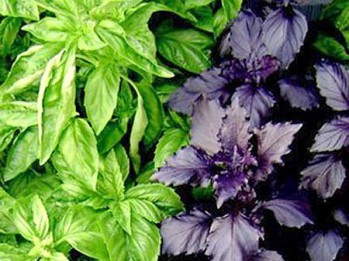 Today we deal with the topic - basil: growing from seeds in the open ground, we study the useful properties of this spicy grass, see how to grow through seedlings, and how to have wonderful leaves of fresh grass on the windowsill all winter.
Today we deal with the topic - basil: growing from seeds in the open ground, we study the useful properties of this spicy grass, see how to grow through seedlings, and how to have wonderful leaves of fresh grass on the windowsill all winter.
Look, this is interesting - tomatoes the best varieties for open ground undersized.
How to grow basil at home from seeds
This herb is very thermophilic, and many complain - they say, sowed seeds along with salads and radishes, but nothing came up. It is understandable - for basil, the temperature at which salad and radish sprout is very insufficient, it will not grow in cold soil and air less than 25 degrees. Therefore, if you want to grow basil right from the seeds, you need to sow it already in June, only then it will grow well and will delight you with an excellent harvest. For productivity and good growth of bushes, you need to fertilize the soil, it is enough to water (but do not overdo it, otherwise the bushes will rot). Necessarily he needs a bright open area - in the shade the basil will be thin, pale, and you will not wait for the harvest from it.
Basil - seedling cultivation
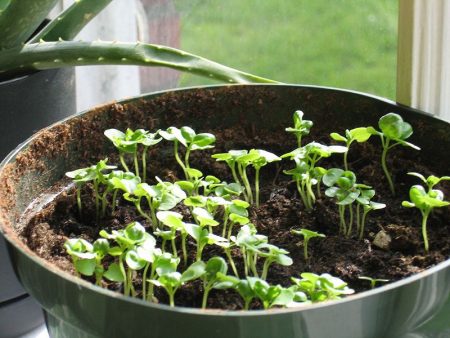
It is best to achieve good juicy bushes and harvest the basil greens - to grow it for seedlings, and then transplanted into the ground. This is a more guaranteed way to get the desired spice crop. To do this, in March, prepare boxes with the land mixture, and sow the seeds in the grooves, which lay at a distance of 5 cm, sprinkle the seeds with soil 1 cm, pour from the sprayer, cover with a film. How will the shoots appear - and in the correct situation, they should appear already on the 11-12th day, remove the film.
The temperature during cultivation should be up to shoots of shoots during the day to 25 degrees, at night to 18, after the appearance of shoots, the temperature is reduced by 5-6 degrees. In the first month, it is advisable to illuminate the seedlings, otherwise it can stretch out. If you planted the plant in boxes when the first real leaf appears, you need to dive them - transplant the plants individually into cups, after a week - feed them. For this, a solution like this is suitable: take 2 g of ammonium nitrate per liter of water, 4 g of superphosphate, add 3-4 g of wood ash. When another 2 weeks pass, repeat top dressing.
As the plant will give 5-6 leaves, it can already be transplanted into the soil on the site, and this will pass from the planting of seeds for about 1.5 months, and count on your weather. By this time, the street should already be completely warm, no frost should be expected. If you grow garlic, look - why does garlic turn yellow in spring what to do.
Landing seedlings
The soil for the basil should be prepared - top dressing made, the site selected is bright, open to air and the sun. Make holes for planting plants so that they are no closer than 25 cm from each other, you can leave up to 40-50 cm between rows, the balysik loves space and air circulation. Well, if legumes or tomatoes previously grew on the bed, the area after potatoes or cucumbers is suitable. By the way, the basil should be planted near plants that you want to protect from aphids and any pests - it will cope perfectly with this and will stand guard over your crop like a wall.
After a week, feed the plants with ammonium nitrate, after 10 days plus superphosphate, and if the soil is very poor, then add organic fertilizers so that the bush forms well and gives more green mass, pinch it on top. And remove flower buds in a timely manner, otherwise the plant will go in color, and you won’t get any greenery from it, it will put all its strength into growing flowers.
Winter storage
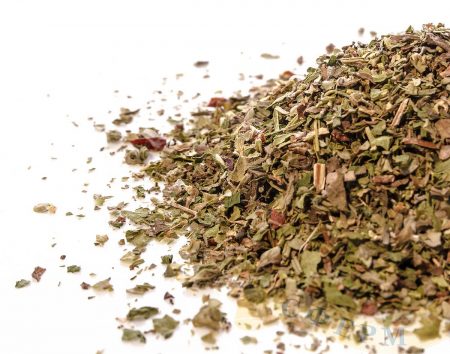
If you want to get your basil seeds next year - leave a couple of plants - let the seeds bloom and give.On the rest, cut the leaves for storage - they can be dried and saved for the winter, tear down for food. How to collect greens for storage: as you will see that the basil is going to bloom - immediately remove the color and cut the plant, leaving only a few leaves. Rinse and hang to dry, the main thing is that the room is ventilated and direct sunlight does not fall on them. As the leaves begin to peel off and crumble in your hands - put in a clean jar, close the lid - so for several years the basil can be kept calm, without losing the properties of its healing and wonderful aroma.
Basil on the windowsill
Another option is to preserve a wonderful plant for the winter - as soon as there is a threat of frost, dig a basil with a lump of earth, transplant it into a pot, put it on the lightest window sill and you will spend all winter with fragrant leaves for your dishes. It is good for meat, perfect for salads, and for any dishes in small quantities it is used.
You can also plant seedlings according to the example of seedlings, as we previously described, in boxes on the windows, so that in winter not to buy dried ones in the store, and fresh basil is always at hand. Grow this wonderful spice, it is very useful!
Useful and harmful properties of basil
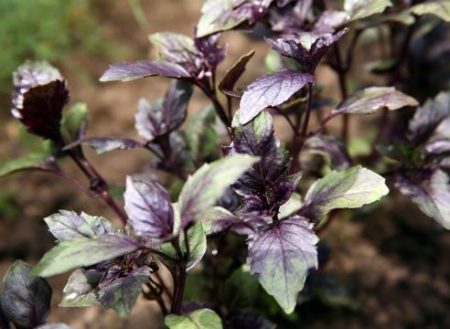
Once upon a time, its beneficial properties are known to the world. They gargle with infusion of leaves, drink it if the headache bothers, with stomach problems, the infusion helps, stimulates digestion, who does not have appetite - it will definitely help. Relieves cramps, strengthens the immune system, is good for colds, can reduce fever and relieve inflammation, relieve stress and remove insomnia.
People know that basil will help with coughing, inflammation of the bladder, cystitis and prostatitis. In India, it is generally considered sacred grass, which the body rejuvenates and restores strength. Basil has unique bactericidal properties and contains many vitamins. But - it must be consumed in limited quantities, so as not to harm health. He is very active.
See another interesting article - care for tomatoes in a polycarbonate greenhouse.

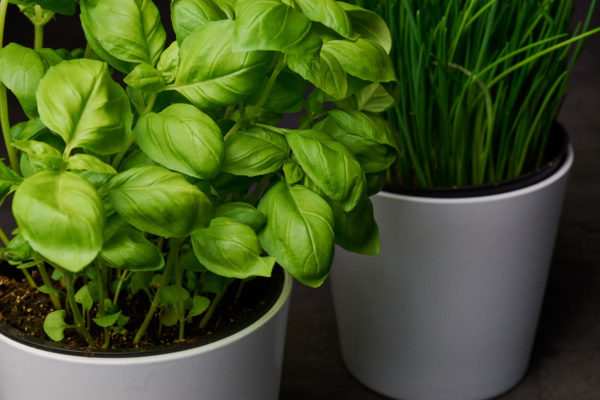
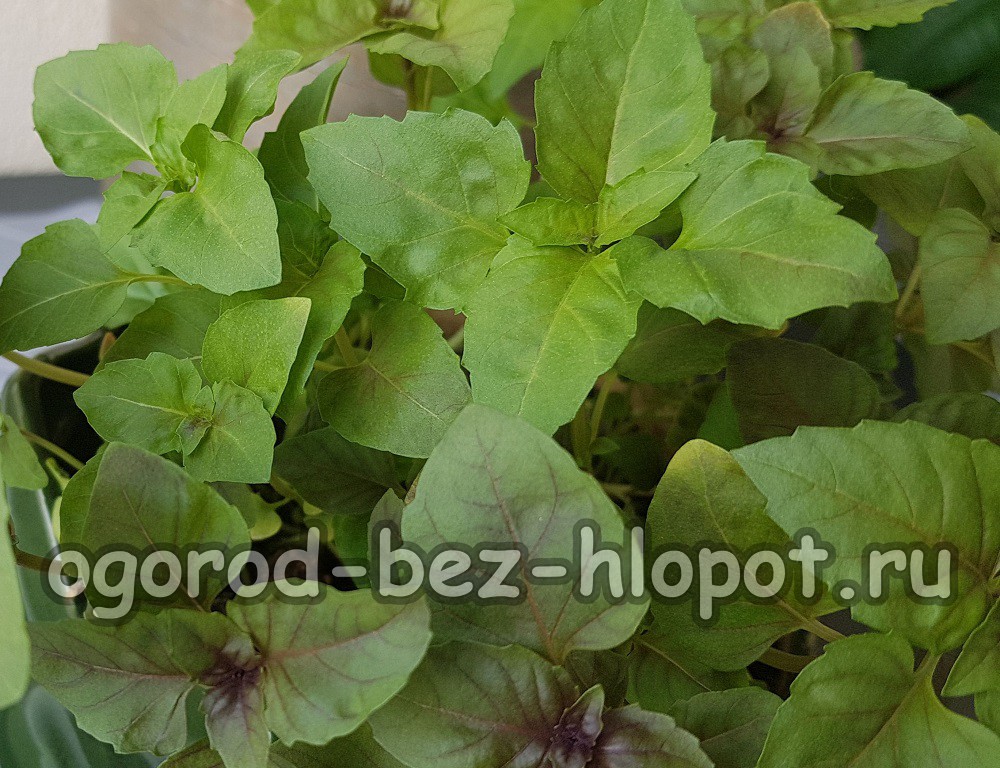
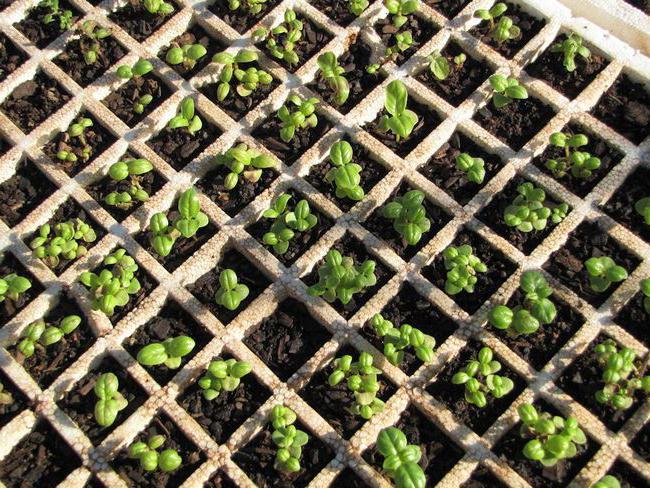
 Basil on the windowsill and its cultivation from seed from scratch
Basil on the windowsill and its cultivation from seed from scratch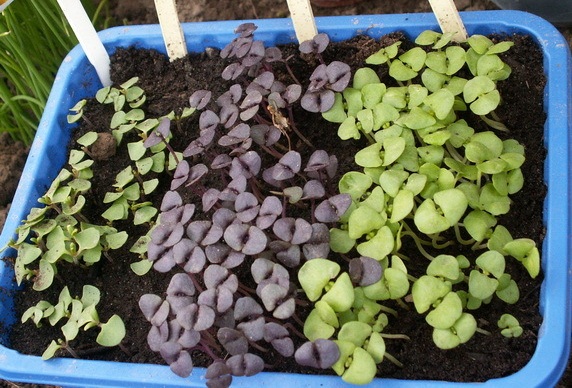 Planting basil seedlings in 2017
Planting basil seedlings in 2017